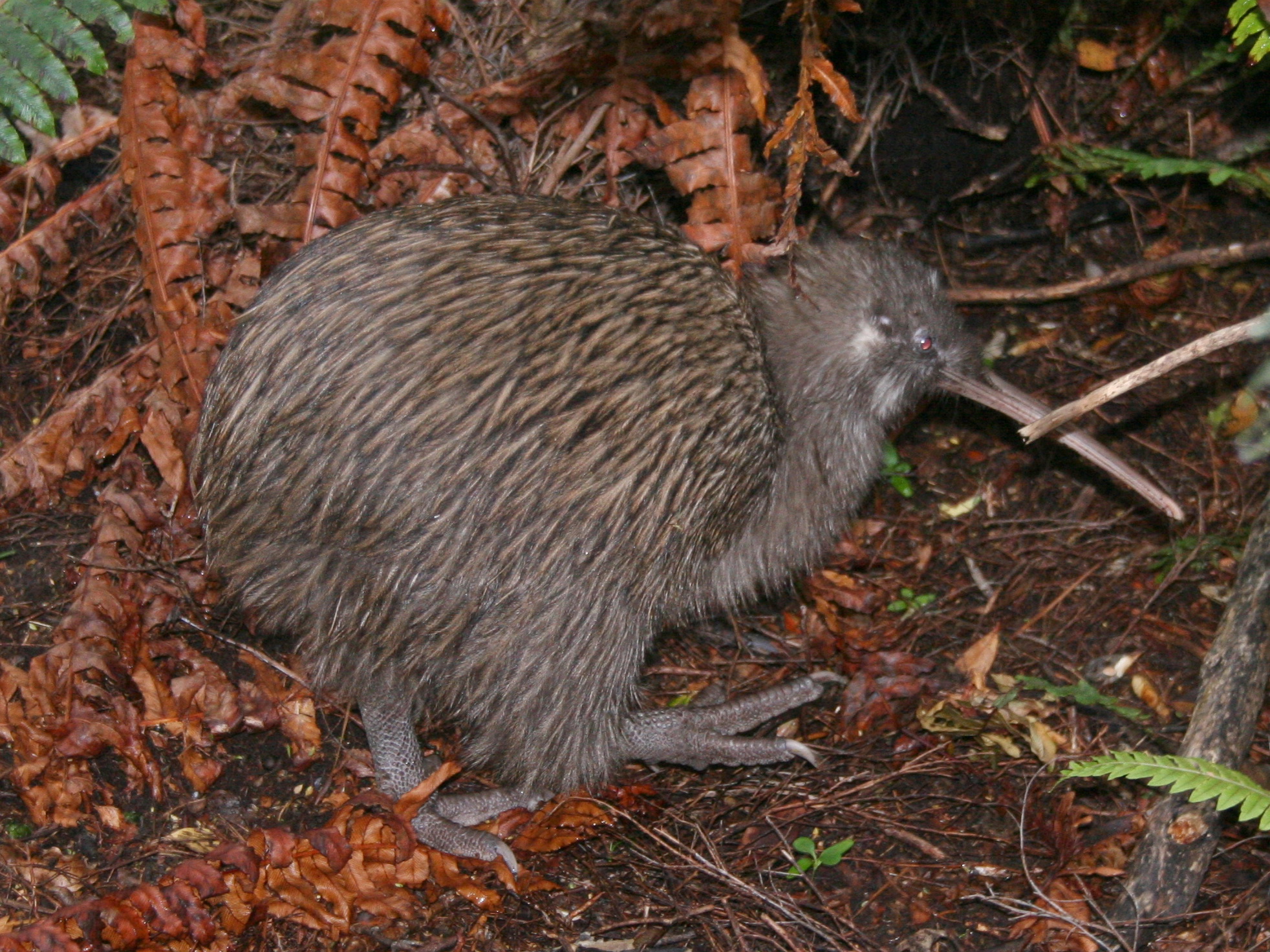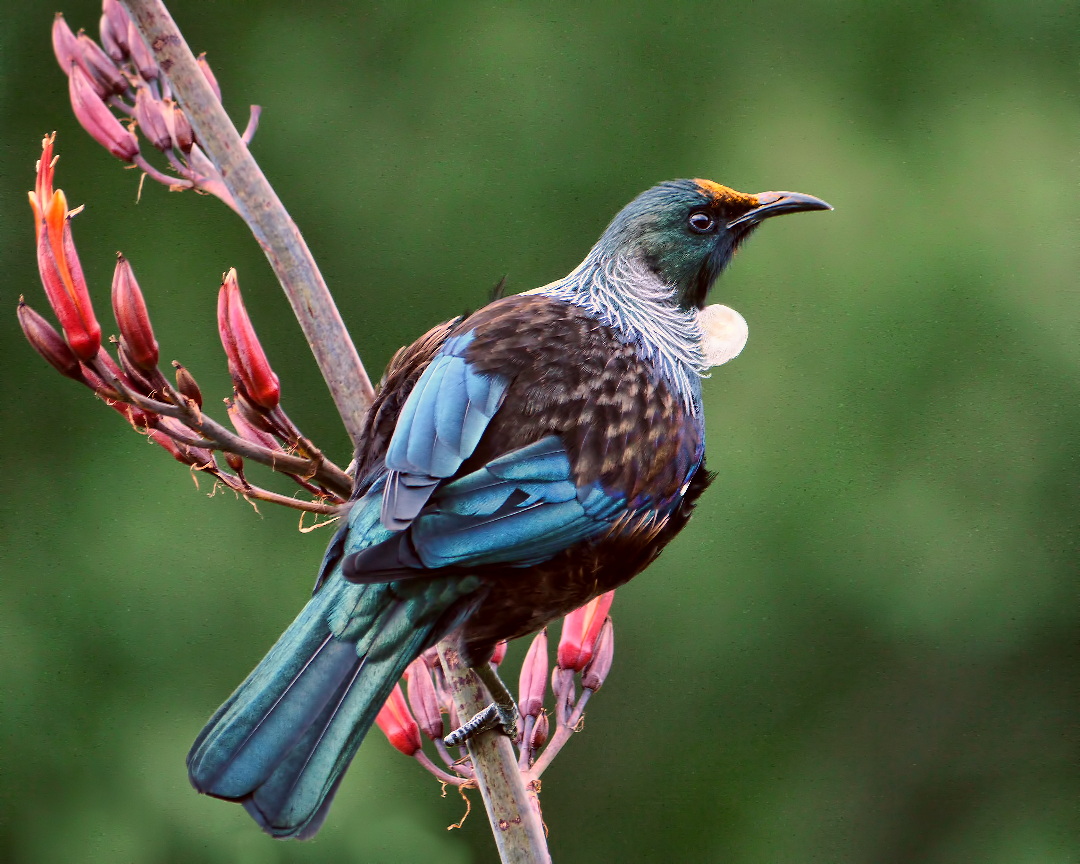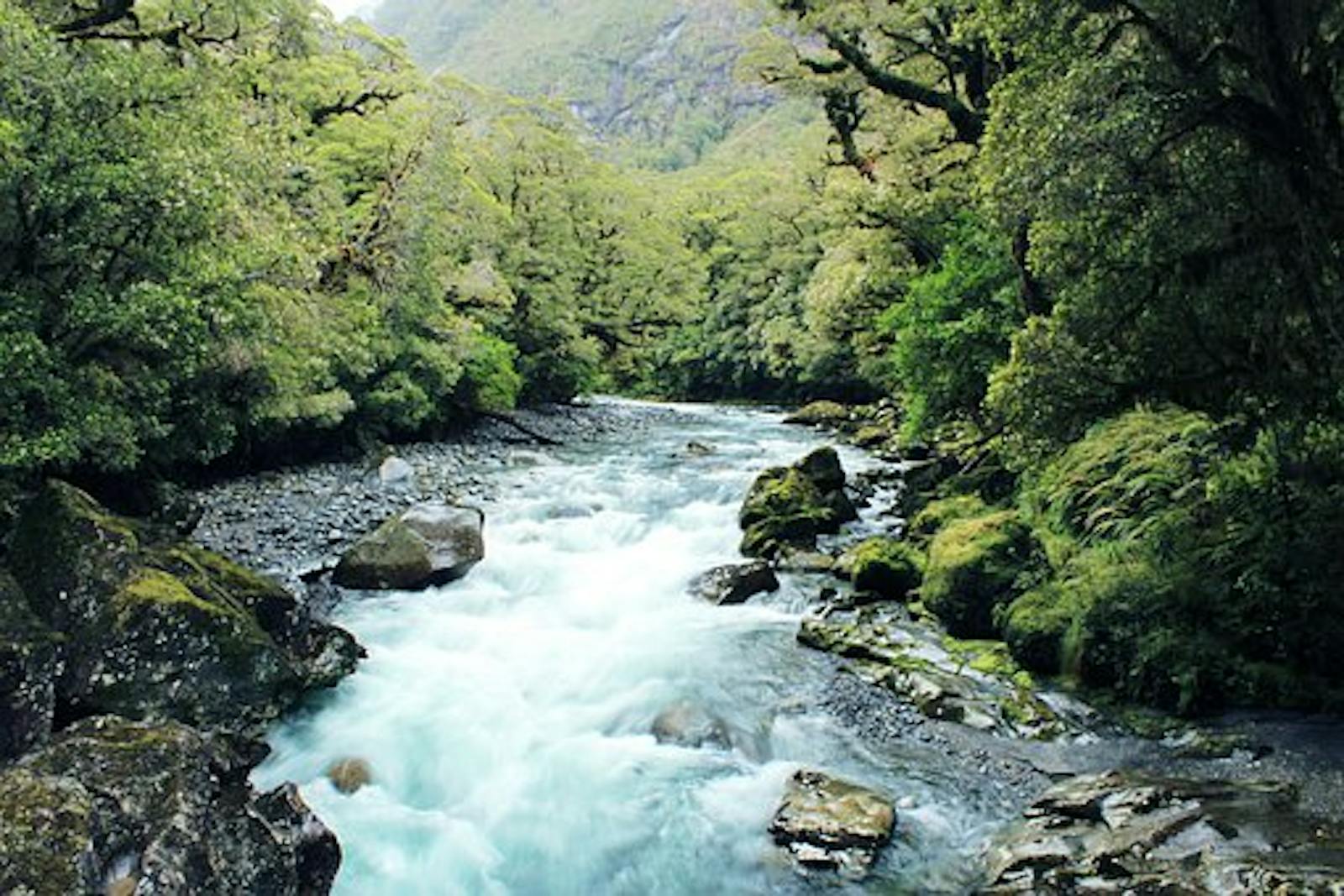Westland Temperate Forests
The ecoregion’s land area is provided in units of 1,000 hectares. The conservation target is the Global Safety Net (GSN1) area for the given ecoregion. The protection level indicates the percentage of the GSN goal that is currently protected on a scale of 0-10. N/A means data is not available at this time.
Bioregion: New Zealand (AU1)
Realm: Australasia
Ecoregion Size (1000 ha):
529
Ecoregion ID:
180
Conservation Target:
87%
Protection Level:
9
States: New Zealand
This high rainfall ecoregion covers the narrow lower-elevation forests of New Zealand’s South Island central coast. These globally rare temperate rainforests are relatively contiguous from the mountains to the coast, an increasingly rare phenomenon anywhere in the world.
.jpg)
The flagship species of the Westland Temperate Forests ecoregion is the Okitaro brown kiwi. Image credit: Wikipedia, Mark2-NZ (CC by 4.0)
More than half of the remaining lowland podocarp/broadleaf forest in New Zealand is found in this ecoregion. Steep mountainsides are dominated by podocarps, such as southern rata (Metrosideros umbellata) and kamahi (Weinmannia racemosa), along with small trees and shrubs, such as wineberry (Aristotelia serrata) and mahoe (Melicytus ramifloris). Rimu (Dacrydrium cupressinum) is dominant in moraines and river terraces due to its tolerance of poor soils. The oldest, acidic and most infertile moraine surfaces can only grow silver pine (Lagarostrobos colensoi), yellow pine (Halocarpus biforme), and bog pine (Halocarpus bidwillii). Only about 100 square kilometers of the kahikatea (Dacrycarpus dacrydioides) forests remain in the fertile river valleys. Previously abundant Matai (Prumnopitys taxifolia) and totara (Podocarpus totara) are now restricted to two main remnants, Waiho and Whataroa Valleys, which are 6 square kilometers in total. Beech species (Nothofagus spp.) are conspicuously absent between 42E 50’S and 43E 40’S, a ‘beech gap’ that was believed to be created by massive glaciers eradicating all vegetation in the past.

Southern Brown Kiwi. Image credit: Wikipedia, Glen Fergus (CC by 2.5 SA)
The region harbors 28 threatened bird species, including 140 of the endemic Okarito brown kiwis (Apteryx mantelli) and 200–300 Haast brown kiwis or tokoeka (Apteryx australis). The vulnerable South Island kaka parrot (Nestor meridionalis) migrate to different attitude for seasonal food sources. Forest bird species like tui (Prosthemadera novaseelandiae) and fantail (Rhipidura fuliginosa) are common. Fiordland crested penguin (Eudyptes pachyrhynchus) breed in dense coastal forests. Wetland birds, such as Australasian bittern (Botaurus stellaris poiciloptilus) and the kotuku (Egretta intermedia), which in New Zealand only breed in the Waitangiroto River, thrive here. New Zealand blue duck (Hymenolaimus malacorhynchos) occur in mountain torrents. Higher in the mountains there is a rich invertebrate fauna, including the rare black Mountain ringlette (Percnodaimon pluto) above 1,800 meters and the carnivorous Ross’ land snail (Powelliphanta rossiana). Sixteen native New Zealand freshwater fish occur in the rivers, including the threatened giant kokopu (Galaxias argenteus), short-jawed kokopu (G. postvectis), and the inanga (G. maculates).

The New Zealand tui. Image credit: Wikipedia, Sid Mosdell (CC by 2.0)
Roughly 4,300 square kilometers of this ecoregion is protected, including Mt. Aspiring National Park and Westland National Park, which together with nearby protected areas form the South West New Zealand Te Wahipounamu World Heritage Area. Half of the 3,479 square kilometers protected area in the central part of the region is in this park. Several reserves, such as the Waitangiroto Nature Reserve and the Saltwater Ecological Area (30 km2), were built to protect species or ecosystems. The region, however, is still threatened greatly by introduced predators, including stoats (Mustela erminea), rats (Rattus rattus and R. norvegicus), and possums putting endemic birds and land snails at risk and damaging native plants. Introduced deer, goats, and chamois browse and damage native vegetation.
Priority conservation actions for the next decade
- Strengthen pest control program focusing on possums, deer, goats, and stoats.
- Support programs to protect threatened kiwi populations from introduced predators.
- Support biodiversity projects of Environment Southland in collaborating with local partners and landowners for wetland creation, revegetation, and site specific management programs.
Citations
- DellaSala, Dominic A. (2011). Temperate and Boreal Rainforests of the World: Ecology and Conservation. Island Press.
- New Zealand Department of Conservation. 1996. West Coast conservation management strategy, 1996-2005: draft. West Coast Conservancy conservation management planning series, no. 2. West Coast Conservancy. Hokitika.
- Wardle, P. 1979. Plants and Landscape in Westland National Park. National Parks Autho
-
-
- DellaSala, Dominic A. (2011). Temperate and Boreal Rainforests of the World: Ecology and Conservation. Island Press.
- New Zealand Department of Conservation. 1996. West Coast conservation management strategy, 1996-2005: draft. West Coast Conservancy conservation management planning series, no. 2. West Coast Conservancy. Hokitika.
- Wardle, P. 1979. Plants and Landscape in Westland National Park. National Parks Author
-
Cite this page: Westland Temperate Forests. Ecoregion Snapshots: Descriptive Abstracts of the Terrestrial Ecoregions of the World, 2021. Developed by One Earth and RESOLVE. https://www.oneearth.org/ecoregions/westland-temperate-forests/
-



